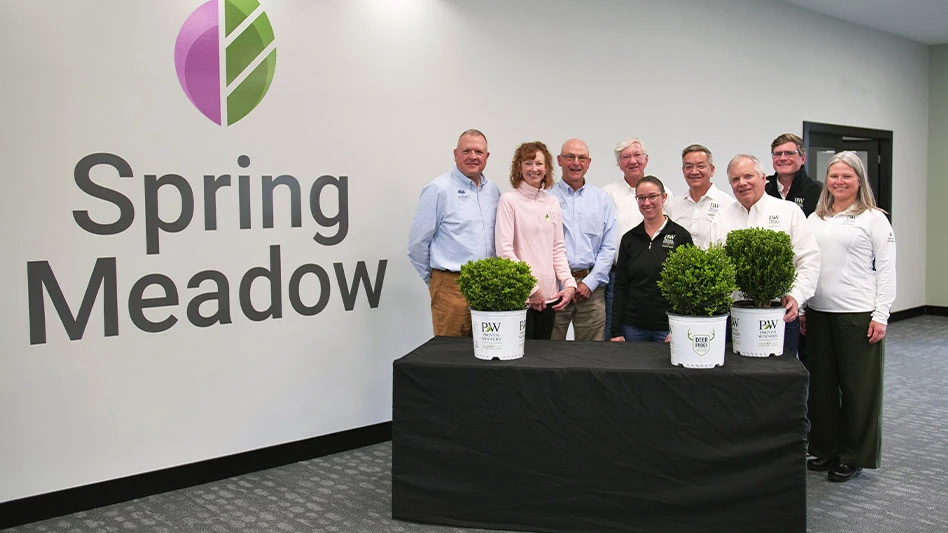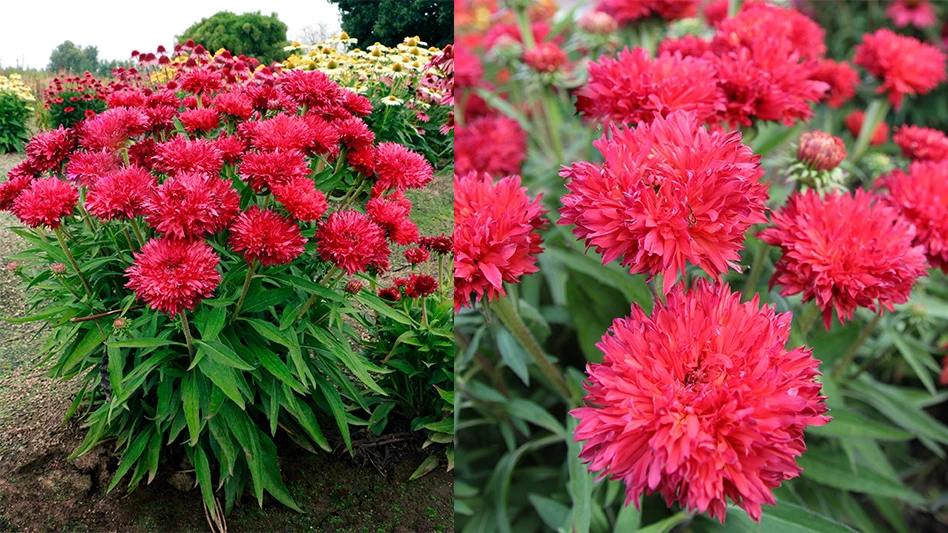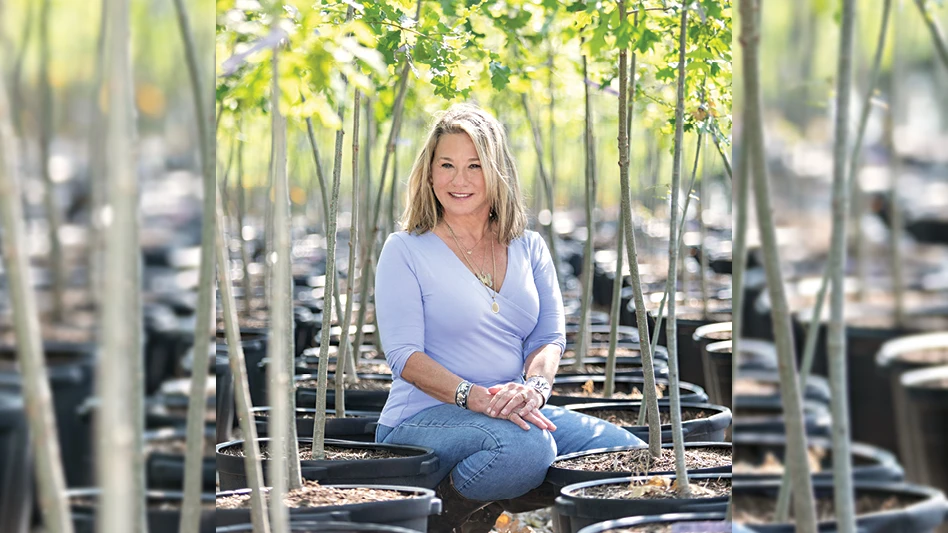|
 Mussaenda erythrophylla and Coleus ‘Watermelon’With the constant clamor for landscape color, coupled with a desire for tough, high-performing plants, it shouldn’t come as a surprise to anyone that tropical plants are in. Whether you call them tender perennials or temperennials or even annuals, these plants all have their roots, so to speak, in the tropics. If you think these plants aren’t tough just because they aren’t cold hardy, think again. No matter how hot the summers get, these hot-blooded green machines will daily deliver good-looking foliage (which is oftentimes highly colorful) and non-stop flowers until you or the first freeze of fall takes them out. Mussaenda erythrophylla and Coleus ‘Watermelon’With the constant clamor for landscape color, coupled with a desire for tough, high-performing plants, it shouldn’t come as a surprise to anyone that tropical plants are in. Whether you call them tender perennials or temperennials or even annuals, these plants all have their roots, so to speak, in the tropics. If you think these plants aren’t tough just because they aren’t cold hardy, think again. No matter how hot the summers get, these hot-blooded green machines will daily deliver good-looking foliage (which is oftentimes highly colorful) and non-stop flowers until you or the first freeze of fall takes them out.
At Paul J. Ciener Botanical Garden (PJCBG), we rely on these tropicals to saturate our formal garden with color throughout the summer and fall months. PJCBG’s Garden Curator, Adrienne Roethling, expertly and artfully arranges beautifully contrasting textures and complimentary colors with ease. Even old standbys such as Persian shield (Strobilanthes dyeranus) can be enlivened when paired with another classic, lantana ‘New Gold’—a beautiful duo of purple and gold, colors that always work well. And yet, this example also illustrates the importance we place on plants with exciting foliage. Flowers are glorious whenever they are present, but foliage lasts no matter the flowers that come and go.
Coleus
Of course, if you want to talk about foliage in tropical plants, then you can’t ignore the plethora of beautiful coleus (Solenostemon scutellarioides) cultivars that continue to be developed. Everyone has their own personal favorites, but for me, I am excited by them more when they are grouped with other plants rather than when they are bedded out in masses. In this regard, Adrienne has excelled in creating dramatic plantings at PJCBG. Here are a few hints as to how coleus can be used in non-traditional ways. 1) Pick up on one of the colors in the coleus leaves by using a flower of that same color for your combination planting—e.g., ‘Paisley Shawl’ coleus and Cuphea schumannii. 2) Contrast the texture of a coleus with a completely different plant—e.g., ‘Songbird’ coleus and Setaria palmifolia ‘Rubra Variegata’ (variegated palm grass). 3) Don’t be afraid to be bold—e.g., ‘Watermelon’ coleus and Mussaenda erythrophylla (red flag bush). 4) Have fun. For example, we paired coleus ‘Religious Radish’ with coleus ‘Holy Guacamole,’ and our visitors at PJCBG chuckled every time they read the labels.
Copper plants
Another group of tropical plants with great foliage is the copper plants (also called copper leaf), the many cultivars of Acalypha wilkesiana. I grew up seeing these used to great effect at the Ira Nelson Horticulture Center in Lafayette, La., in the 1980s, and ever since then, I’ve been in love. Although copper plants are generally not small-statured, they are great for adding height and bold-textured foliage to the summer garden. Plus, they can take a hard pruning if they are outgrowing your site.
Classically, copper plants are best known by the cultivars with (drum roll, please) copper-tinted foliage. At PJCBG, we used a mass planting of tall, large-leaved ‘Haleakala’ and ‘Brazen,’ set off with the small-leaved and compact-statured ‘Inferno’ in front. If you don’t care for these bright colors, most of the leaf forms you see in copper (‘Obovata Cristata’) can also be found in green, too (‘Hoffmanii’). Just don’t plant your copper plants too early, as they strongly resent temperatures below 50°F, especially cool soil temperatures.

2. Strobilanthes dyeranus and lantana ‘New Gold.’ 3. Mussaenda erythrophylla. 4. Acalypha wilkesiana ‘Hoffmanii.’ 5. Tradescantia pallida ‘Pale Puma.’ 6. Duranta erecta Aussie 2000.
Flowers, too
Now just so you don’t think I’ve gone completely crazy ignoring flowers, I’ll mention a couple of exciting tropical shrubs that can be effectively used as tender perennials in temperate zones. Red flag bush (M. erythrophylla, sometimes seen incorrectly listed as M. coccinea) is a fabulous continuous blooming shrub. The flowers are bicolored, this effect is produced by the contrasting tubular corolla and the calyx, of which one sepal is enlarged and bract-like. In M. erythrophylla, the corolla is white, while the enlarged sepal is fire-engine red. This plant can be discerned at a great distance, so showy are its blooms. Although it may be hard to see the resemblance to gardenias in this plant, take a look at the southeastern U.S. native Pinckneya bracteata (fever tree), and you’ll quickly see the family ties. Grow red flag bush in a bright sunny setting in well-drained soils. Poor soil drainage will result in foliar iron chlorosis. Other Mussaenda are grown, including white-sepaled species, but the nomenclature of plants in cultivation is highly confused.
Golden thryallis (Galphimia glauca) is another flowering machine, this plant being popularly seen in southern Florida as a landscape subject. Although it is not as easily propagated as other tropicals, it is well worth acquiring (preferably in larger sizes due to its slower growth rate) and used because of its constant parade of bright yellow flowers. Golden thryallis does possess some minimal cold hardiness, a factor which can be exploited in fall plantings, with the evergreen leaves surviving the first frosts until temperatures drop below 27°F.
Oldies but goodies
I’ll highlight just three more examples which tell stories of where we’ve come with tropicals. The first two are in many ways old standbys of the Deep South, plants I knew from my childhood in southern Louisiana as “old-fashioned” has-beens—Duranta erecta (golden dewdrop or Brazilian skyflower) and Tradescantia pallida (purple heart or setcreasea). Duranta certainly has come a long way since the 1970s, with a plethora of gold-leaved, variegated and picotee-flowered cultivars now available.
One plant that I ran across in Japan in 2005 was given to me as D. erecta ‘Aussie 2000’—a reverse variegation that I had not previously before seen, with gold-centered/green-edged leaves borne on a highly compact frame (compared to typical forms of this species). In the world of T. pallida, much new information has also been learned, as it is generally now accepted that this species is perfectly root-hardy in USDA Hardiness Zone 7. Thanks to this realization, it is now possible to use the many new beautiful cultivars of purple heart (not all of which have purple leaves) as herbaceous perennials in Zone 7 and warmer. One of my favorites is the relatively newly named T. pallida ‘Pale Puma,’ a plant I suspect may actually represent a hybrid between T. pallida and T. sillamontana (white velvet).
And consider this final plant, Pentapetes phoenicea (commonly called “copper cups”), a true annual introduced by Thomas Jefferson to Monticello in 1811. This annual, somewhat related to cacao, is also being rediscovered for its upright form and alluring red-orange flowers. These tropicals will enliven the garden with color and tropical energy, while also celebrating the historic path we’ve taken in bringing (and sometimes rediscovering) these plants as worthy garden subjects.

7. Acalypha wilkesiana ‘Haleakala,’ ‘Brazen,’ ‘Inferno,’ ‘Serrata.’ 8. Galphimia glauca.
9. Coleus ‘Songbird’ and Setaria palmifolia ‘Rubra Variegata.’ 10. A. wilkesiana ‘Obovata Cristata.’
F. Todd Lasseigne is executive director, Paul J. Ciener Botanical Garden, Kernersville, N.C.; todd@pjcbg.org.
|










